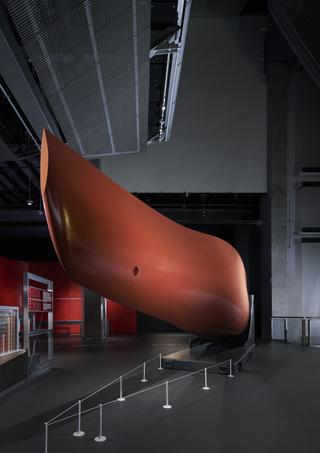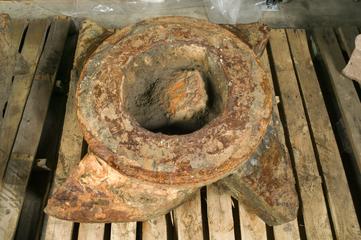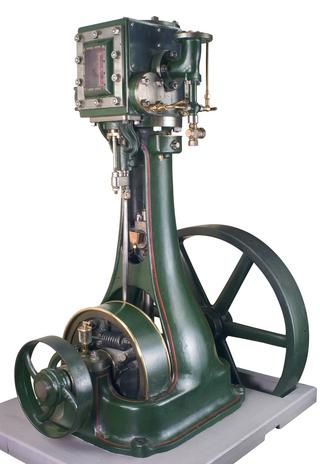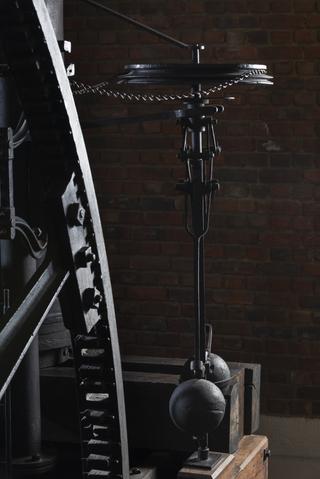




Framed print of Henry Beighton's Engraving of the Newcomen Engine at Griff, 1717, Henry Beighton, England, 1717-1725.
Beighton (1687-1743) was an engineer and surveyor from Warwickshire. In 1717 he published this engraving of the atmospheric steam engine erected in 1714 at Griff, Warwickshire, by Thomas Newcomen. The original of the engraving was discovered in 1925 in the library of Worcester College, Oxford, in 1925, by Mr L de M Johnson, of the Oxford University Press. It is not just the earliest drawing of the Newcomen engine, but also the earliest document of any kind showing the engine's construction. Until the discovery of Beighton's image the earliest known depiction of the Newcomen engine was that by Barney, of 1717 (see inv. 1930-921).
This copy of the print was found by HW Dickinson, the Science Museum's Keeper of Mechanical Engineering, some time between 1926 and 1928. Dickinson realised that the copy, alongside that at Oxford, were the only two examples of Beighton's image in existence. The Science Museum had made a collotype copy of the Oxford copy in 1926, presented by the Newcomen Society (see inv. 1926-144) - but having an original for the collection was deemed to be desirable so Dickinson quickly purchased the second copy himself and the museum then purchased it from him for twelve pounds, the price he had himself paid.
Details
- Category:
- Motive Power
- Object Number:
- 1930-785
- Measurements:
-
overall: 330 mm x 310 mm x 30 mm, 1.283kg
- type:
- credit:
- Dickinson, H.W.




